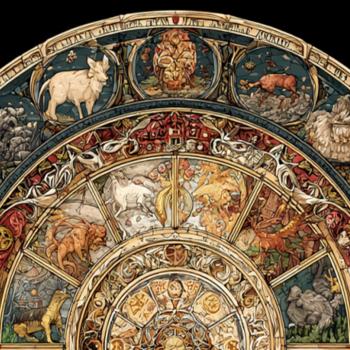
Here’s the deal: every single one of us reads the Bible through a lens. Most of us were handed one early on—whether it was Southern Baptist, Catholic, progressive, or something else entirely. And that lens? It shaped how we saw God, faith, ourselves, and the world. Sometimes, those lenses worked just fine. But sometimes, they blurred the radical, world-flipping messages woven into the text.
That’s where a queer lens comes in.
What Does It Mean to “Queer” the Bible?
When we say “queer,” we’re talking about something much bigger than sexuality or gender identity (though those are absolutely part of it). “Queer” here means challenging the assumption that there’s one “normal” way to live, love, or believe. It’s about seeing God, scripture, and our faith traditions as invitations to question, to disrupt, and to imagine something better.
Think about it: how often do we assume that God fits neatly into the boxes we’ve constructed? Straight, male, powerful in a domineering way, always blessing the status quo? But the God of the Bible? That’s a God who shows up in burning bushes, as a wandering carpenter, as a spirit moving where it will. That’s a God who constantly queers our expectations.
A queer reading of scripture reminds us that the Bible is full of stories of outsiders, of those who don’t fit societal norms, of people challenging systems of oppression. It’s Joseph with his many-colored coat, it’s Ruth and Naomi’s unbreakable bond, it’s Jesus flipping tables in the temple.
The Power of Naming Normativity
One of the most radical ideas I’ve heard about queerness is this: queer only exists because we’ve made something else “normal.” If we stopped defining certain ways of being as default—straight, cisgender, male, white, you name it—we wouldn’t need the category of queer at all. But because we live in a world where norms are enforced (and let’s be honest, weaponized), queerness becomes a tool to push back, to say, “Wait a minute—what if we’re all a little stranger and more beautiful than we thought?”
When you read scripture through that lens, it transforms everything. Suddenly, Genesis 1 isn’t just about God making humans; it’s about God making beings who defy categories. It’s about a divine creativity that delights in diversity.
Moving Beyond Defensiveness
For so long, queer Christians have had to defend their existence. “See? The Bible doesn’t really condemn us! Jesus loves everyone!” And while that work is vital, it’s just the beginning. Queer readings of the Bible aren’t just about saying, “We belong, too.” They’re about saying, “Let’s dream bigger about what God’s kingdom could look like.”
What happens when we read the Bible not just as a rulebook but as a text that’s alive—inviting us to imagine, question, and build a better world? That’s the heart of queer theology.
Holiness and Queerness: Two Sides of the Same Coin
One of my favorite moments in this journey came when someone pointed out how the Bible describes holiness. To be holy is to be set apart, different, other. Sound familiar? If holiness is about embracing what’s radically different, maybe queerness isn’t just compatible with faith—it’s central to it. What if God is calling all of us to embrace the parts of ourselves that don’t fit, that don’t conform, that resist easy categorization? What if queerness is holy?
Why This Matters
At the end of the day, a queer approach to scripture isn’t just about finding new ways to interpret old texts. It’s about liberation—for queer folks, for straight folks, for all of us. It’s about stepping into a tradition that’s bigger and messier and more beautiful than we’ve been taught. And it’s about rediscovering a God who refuses to be boxed in.
So here’s my challenge to you: pick up your Bible (or your app) this week and try reading it with a new lens. What would this passage mean if you read it as a story of disruption? Of someone breaking free from the norm? Of a God who is radically, endlessly loving? You might be surprised by what you find.
And as always, let’s keep the conversation going. What’s challenging you about this idea? What excites you? What passages have felt “queer” to you in ways you couldn’t quite articulate before? I’d love to hear your thoughts.
Until next time, friends—stay curious, stay open, and let’s keep queering the way we see the world.
**

The newest book from Keith Giles, “The Quantum Sayings of Jesus: Decoding the Lost Gospel of Thomas” is available now on Amazon. Order HERE>
Keith Giles is the best-selling author of the Jesus Un series. He has appeared on CNN, USA Today, BuzzFeed, and John Fugelsang’s “Tell Me Everything.”
He co-hosts The Heretic Happy Hour Podcast and his solo podcast, Second Cup With Keith which are both available on Spotify, Amazon, Apple, Podbean or wherever you find your podcast fix.













